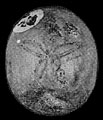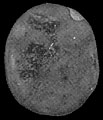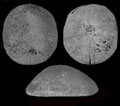The Echinoid Directory
Limpasiaster Aziz & Badve, 2001, p. 49
| Diagnostic Features |
|
|---|---|
| Distribution |
|
| Name gender | masculine |
| Type | Limpasiaster ariyalurensis Aziz & Badve, 2001, p. 49; by original designation. |
| Species Included |
|
| Classification and/or Status |
|
| Remarks |
|




